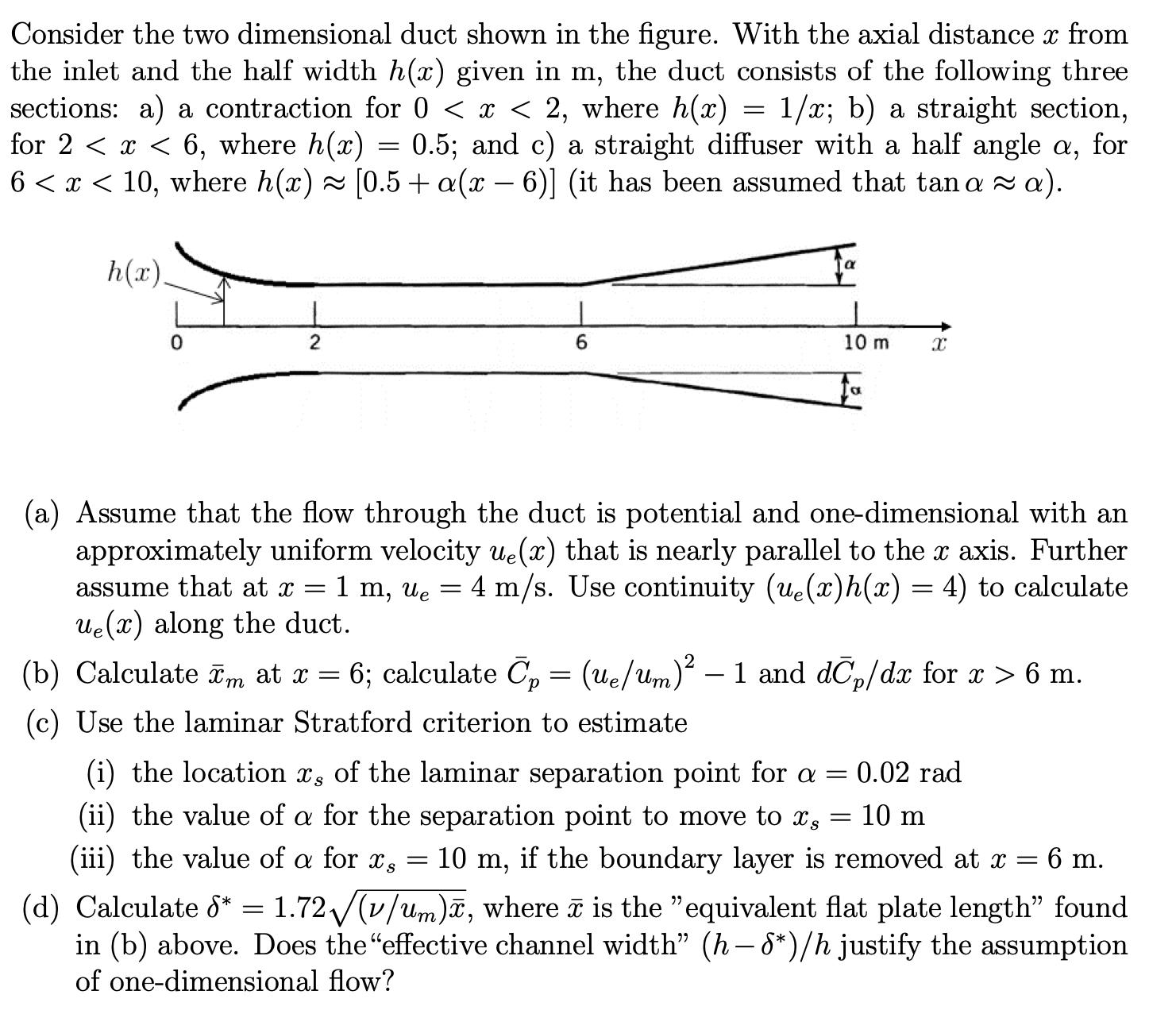Answered step by step
Verified Expert Solution
Question
1 Approved Answer
Consider the two dimensional duct shown in the figure. With the axial distance from the inlet and the half width h(x) given in m,
Consider the two dimensional duct shown in the figure. With the axial distance from the inlet and the half width h(x) given in m, the duct consists of the following three sections: a) a contraction for 0 < x < 2, where h(x) = 1/x; b) a straight section, for 2 < x < 6, where h(x) 0.5; and c) a straight diffuser with a half angle a, for 6 < x < 10, where h(x) [0.5+ a(x 6)] (it has been assumed that tan a a). h(x). 0 2 = 6 10 m a (a) Assume that the flow through the duct is potential and one-dimensional with an approximately uniform velocity ue(x) that is nearly parallel to the x axis. Further assume that at x 4 m/s. Use continuity (u(x)h(x) 4) to calculate 1 m, ue = ue(x) along the duct. (b) Calculate Im at x = 6; calculate C = (ue/um) - 1 and dCp/dx for x > 6 m. (c) Use the laminar Stratford criterion to estimate (i) the location x, of the laminar separation point for a = : 0.02 rad (ii) the value of a for the separation point to move to s 10 m (iii) the value of a for x, = 10 m, if the boundary layer is removed at x = = 6 m. = = (d) Calculate 8* = 1.72/(v/um), where is the "equivalent flat plate length found in (b) above. Does the "effective channel width" (h 8*)/h justify the assumption of one-dimensional flow?
Step by Step Solution
★★★★★
3.36 Rating (152 Votes )
There are 3 Steps involved in it
Step: 1
a Given Section 1 contraction 0Section 2 straight 2Section 3 d...
Get Instant Access to Expert-Tailored Solutions
See step-by-step solutions with expert insights and AI powered tools for academic success
Step: 2

Step: 3

Ace Your Homework with AI
Get the answers you need in no time with our AI-driven, step-by-step assistance
Get Started



